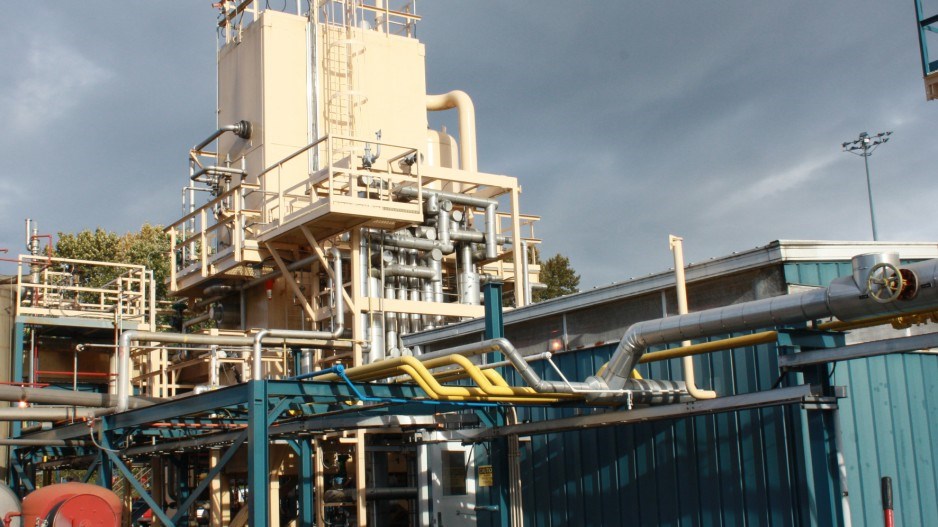At the Globe 2016 conference earlier this year, a diverse panel on energy agreed that natural gas could provide an important bridge as the world moves to low or no-carbon energy sources.
Even the Environmental Defence Fund agreed: natural gas could be the low-carbon backstop needed to bolster renewable power, which is mostly intermittent and unpredictable.
It was music to the ears of those who want to see a liquefied natural gas industry develop in B.C.
The one dissenter on the panel was Tzeporah Berman, who warned that investing in unconventional gas and liquefied natural gas might be folly, because adoption of renewable energy might come much quicker than many think.
“I think that, in some regions, we can leap straight to a significant renewable grid,” warned Berman, an adjunct professor of environmental studies at York University.
Just last week, an example of what she was talking about crystallized when FortisBC lost a 20-year LNG contract with Hawaii – a deal that would have required a second multimillion-dollar expansion of its Tilbury Island LNG plant, which is already undergoing a $400 million expansion.
But this time it wasn’t low oil and gas prices that caused an LNG developer to hit the pause or delete button – it was competition from renewable energy.
Under the 20-year agreement with Hawaii’s power utility, Hawaii Electric, FortisBC would have supplied 800,000 tonnes of LNG per year.
But the contract was dependent on a merger between Hawaii Electric and Florida’s NextEra Energy Inc.
On July 15, Hawaii’s Public Utilities Commission rejected the merger, saying it was not only bad for ratepayers, but that the power utility’s plans did not fit within Hawaii’s mandate to achieve a 100% renewable energy objective by 2045.
“Moving forward with that [LNG contract] was dependent on the merger of the two companies,” said Doug Stout, FortisBC’s vice-president of marketing development. “So, in fact, Hawaii Electric has withdrawn their application to the commission for their power plan and LNG.
“They’re basically revisiting their power plan and deciding what to do in the future. In the meantime, that means we won’t be proceeding with another expansion of Tilbury, at this time anyway.”
Stout would not say how much the second expansion would have represented in capital investments, only that it would be about double the scale of the $400 million expansion underway at the company’s Tilbury Island plant.
Hawaii currently generates most of its electricity from fuel oil .
Hawaii Electric’s plans were to phase petroleum fuel out with cleaner burning LNG, which would augment whatever renewable energy sources are built.
But Hawaii is one region that might not need LNG as a bridge to get it to 100% renewable energy.
“Hawaii has not consumed gas in the power sector, and I think it makes sense for Hawaii to leapfrog the gas bridge and go straight to the renewables and storage combo, especially given how much costs have come down for renewables and power storage,” said Henan Xu, energy analyst for S&P Global Platts.
As Xu points out, Hawaii has “superb” wind power resources and popular support for rooftop solar power. And because Hawaii sits on top of a geological hot spot of volcanic activity, it also has some premium geothermal energy potential.
Unlike wind and solar, geothermal produces energy continuously, which could help address a serious pain point in 100% renewable energy objectives: intermittency and the need for energy storage.
But the technology is developing that will address those issues, and Berman predicts LNG might not be the bridge fuel that many think it will be.
“Ten years ago, it was a solid argument that we needed gas to replace coal to reduce emissions,” Berman told Business in Vancouver. “But now, given the technological breakthroughs that we’ve seen, even in the last couple of years, we’re starting to see countries move directly from fossil fuels into renewables. And this particular example, I think you’re going to see a lot more of it.”
She added that the price of building solar and wind generation has dropped to the point where both can compete with more traditional energy sources.
“At the same time, you have governments scrambling to reduce emissions to meet their Paris commitments, and the result is new renewable energy policies at a state, provincial and national level that are expanding incredibly quickly.”




